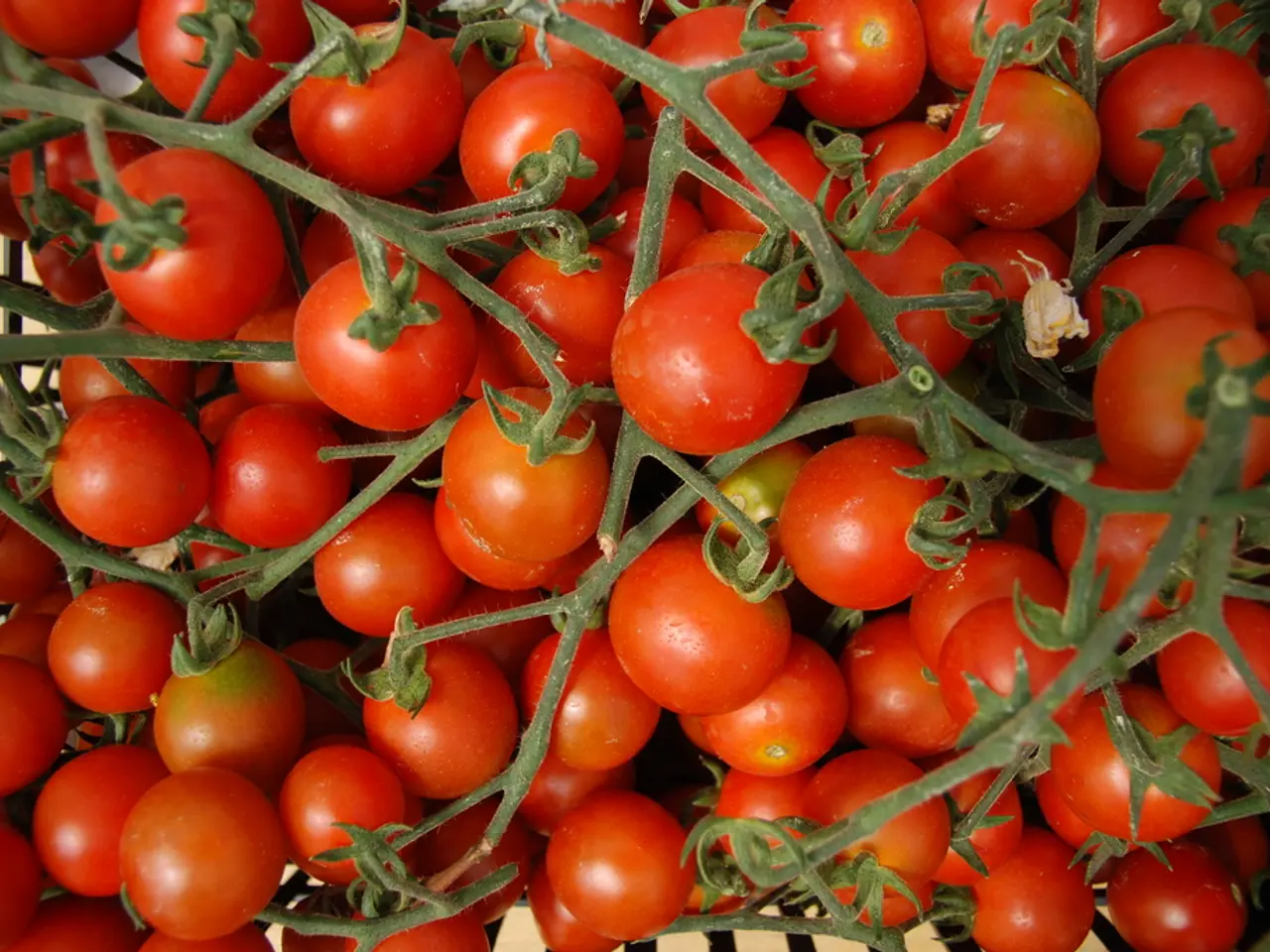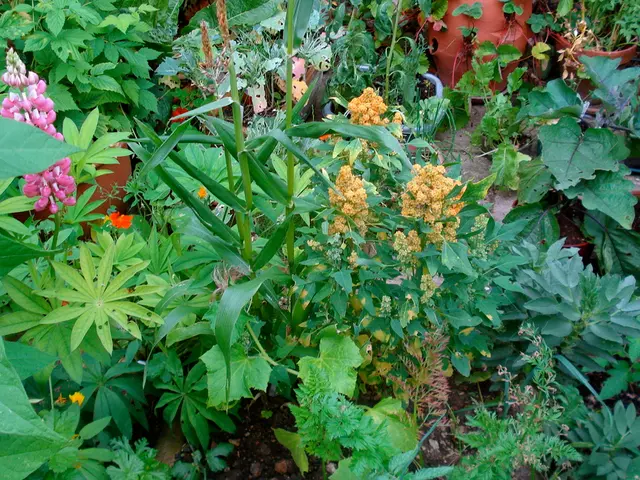Self-Growing Tomatoes with These 15 Innovative Tips and Tricks
Turn Your Home into a Juicy Tomato Paradise
There's nothing quite like a ripe tomato, fresh from your own garden, bursting with flavor that store-bought tomatoes can't compete with. Even gardening pros may struggle with getting their tomato plants thriving. But don't sweat it! With these simple, clever tricks, you can grow a bountiful harvest without breaking a sweat.
Dig Deeper for Better Roots
Remember, tomatoes can grow roots along their stems. Take advantage of this by planting them deeper than they were in their nursery pots. Remove the lower leaves, bury about two-thirds of the stem underground. This creates a stronger root system for better nutrient uptake, drought resistance, and stability.
Recycle Eggshells to Prevent Rot
Blossom end rot, those dark, sunken spots on the bottom of tomatoes, is a common problem caused by a calcium deficiency. Crushed eggshells offer an easy solution that salvages kitchen waste and becomes garden gold. Add these finely crushed shells to the soil before planting, or make eggshell tea for added calcium.
Create Your Own Drip System
Tomatoes require consistent moisture for the best taste, and inconsistent watering can cause problems like fruit splitting and blossom drop. Make life easier on yourself with a plastic bottle drip system. Poke holes in the bottom of a clean plastic bottle, bury it next to your tomato plant, and fill it with water. This slow release of moisture keeps soil moist without evaporation.
Prune for More Tomatoes
Pinching off excess foliage redirects energy where it counts-toward growing fruit. Remove suckers (small shoots), improve airflow, and let the plant shine. Properly thinned dense foliage will lead to larger, healthier tomatoes and reduced disease problems.
Use Buddy Basil
Basil and tomatoes not only taste great together, but companion planting can also repel pests like hornworms, aphids, and flies. The pungent aroma masks the scent that attracts these unwanted visitors, offering chemical-free pest protection.
Go Green with Coffee Grounds
Used coffee grounds provide a nitrogen boost that tomatoes love, as well as trace minerals for healthy growth. Sprinkle used grounds around the base of your plants and work them into the soil. The slightly acidic nature helps balance soil pH for optimal tomato growth.
Add a Red Mulch Reflector
Red plastic mulch can boost tomato yields by up to 20 percent by reflecting specific wavelengths of light back onto plants, promoting more fruit production. Lay mulch before planting or carefully place it around established plants. It suppresses weeds, conserves soil moisture, and prevents disease.
Water at the Base, Not from Above
Wet foliage creates an environment for fungal diseases like early blight and septoria leaf spot. Instead of overhead watering, direct water at the base of plants to keep leaves dry. Soaker hoses or drip irrigation systems deliver water precisely where it's needed.
Give 'Em a Gentle Brush
Gently brushing your hand across tomato plants a minute or two each day stimulates strong stems for improved support. Start this practice when plants reach about 2 feet tall and continue throughout the growing season.
Pick at Peak Ripeness
Harvest your tomatoes at their peak ripeness for an unforgettable flavor. Squeeze gently to determine firmness, and pick in the morning when flavors are most concentrated. Use scissors or pruners to cut the fruit from the vine without damaging the plant.
Save Seeds for Next Year
Save seeds from healthy, productive plants to grow even better tomatoes next year. Ferment the seeds, rinse thoroughly, and dry completely before storing. Label each variety with notes about taste, productivity, and disease resistance to create your personalized seed bank.
Trench Plant for Leggy Transplants
For leggy transplants or in windy locations, the trench planting method can offer advantages. Bury the main stem of the plant almost horizontally in a trench 3 to 4 inches deep for a longer root system. The plant will straighten itself toward the sun and develop exceptional drought resistance.
So there you have it, simple, actionable tips to turn ordinary gardens into bountiful tomato havens. Implementing these techniques will make tomato-growing a breeze, and your taste buds will thank you for every juicy bite. Happy gardening!
Incorporating eggshells into the soil prior to planting can help prevent blossom end rot, ensuring a healthier tomato harvest. By adding finely crushed eggshells to the soil, you're creating a natural source of calcium for your tomato plants.
Basil and tomatoes make great companions in the garden, not just for their shared flavors but also because basil can help repel various pests. Interplanting these two plants can provide natural chemical-free pest protection for your tomato plants.







